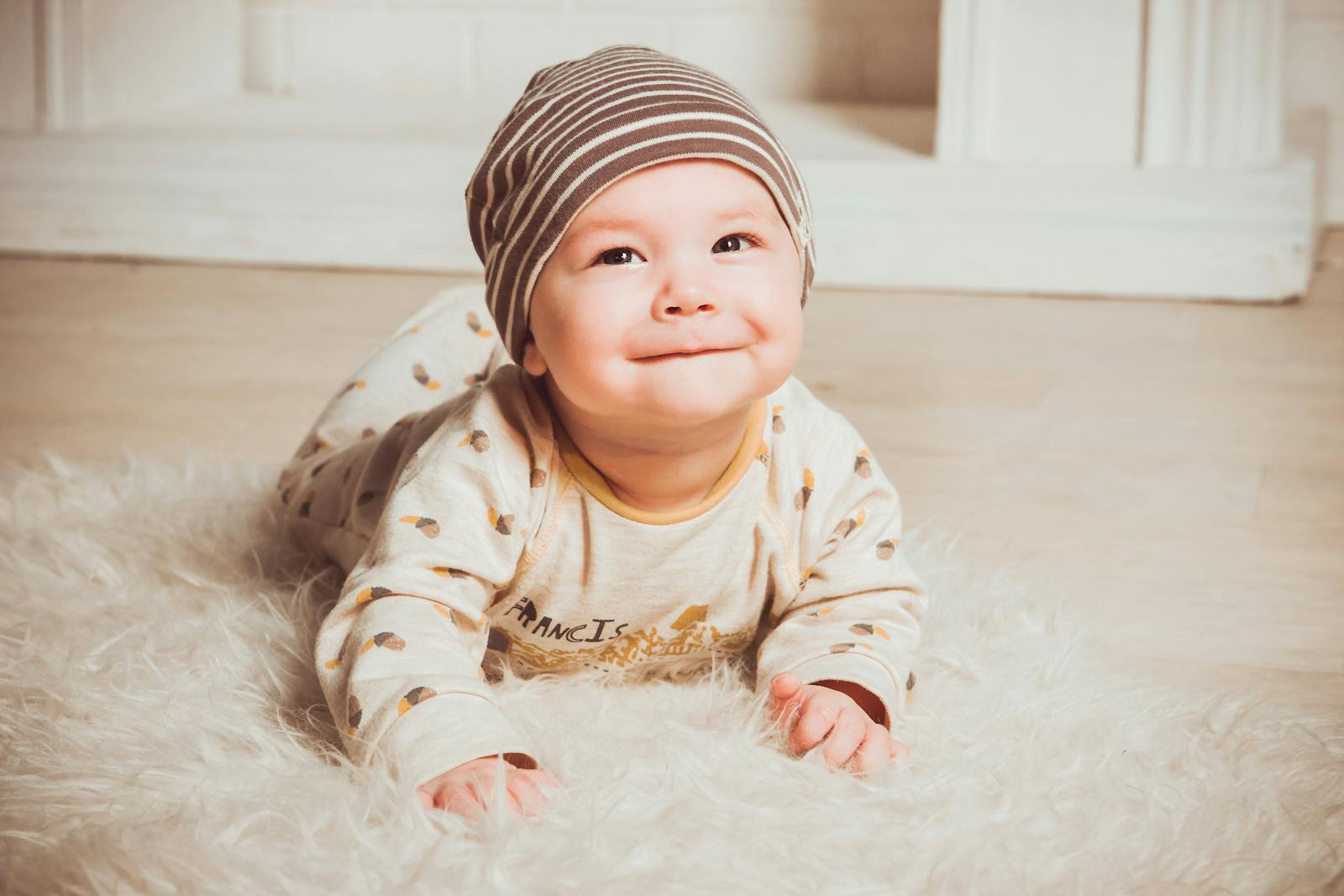The development of consciousness in children is a fascinating process that unfolds gradually as they grow. Consciousness, in the simplest terms, is the awareness of oneself and one’s surroundings. For children, this journey from basic awareness to a more complex understanding of themselves and their place in the world is shaped by biological maturation, social interactions, and cognitive development. But at what age does a child truly become conscious? And what are the stages involved in developing self-awareness? This article will examine these questions by exploring the stages of self-awareness, outlining how children progress from mere physical responses to a sophisticated sense of self.
Scientists, psychologists, and educators alike have been interested in understanding when and how children become conscious, given its importance for emotional, social, and cognitive development. While the exact timeline can vary from child to child, researchers have identified distinct stages in which children develop awareness, each stage building on the last as the child gradually acquires a complex understanding of themselves. Here, we’ll look at these 5 stages of self-awareness, exploring the significant milestones that mark a child’s journey into conscious awareness.
The Concept of Consciousness in Children
Consciousness can be thought of as a combination of awareness of oneself and awareness of one’s environment. In infants and young children, this awareness starts at a very basic level and gradually becomes more intricate as they grow. Early stages involve sensory perception and physical awareness, while later stages encompass complex ideas of self-identity, social roles, and introspective thinking.
Understanding when a child becomes “conscious” involves recognizing when they begin to demonstrate self-awareness—an essential component of consciousness that allows them to recognize themselves as separate from others. This awareness has been a topic of study in fields such as developmental psychology and neuroscience, with research showing that self-awareness does not emerge all at once. Instead, it develops in stages, reflecting the gradual nature of brain maturation and cognitive development. These stages provide insight into when and how children start to form a conscious sense of self, shaping their ability to interact with others and understand their role in the world.
Stage 1: Differentiation (0-4 Months)
The earliest stage of self-awareness, known as differentiation, typically occurs between birth and around four months of age. During this period, infants begin to recognize the distinction between their own physical bodies and the external world. At birth, infants possess only a rudimentary awareness of their surroundings, with limited control over their bodily movements. However, as they grow, they start to gain a sense of control over their own bodies, which is a foundational step toward developing a sense of self.
Differentiation is observable in the way infants react to their environment and respond to sensory stimuli. For instance, infants begin to realize that their actions—such as moving an arm or turning their head—result in changes to their field of vision or tactile sensations. Infants at this age may also start to show signs of recognizing their own limbs as separate from other objects. Differentiation is closely tied to motor development and sensory experiences, as infants learn that they can affect their surroundings through actions such as reaching, grasping, and kicking. This stage sets the groundwork for a child’s growing awareness of their physical self, a crucial first step on the road to self-consciousness.
Stage 2: Situation (5-12 Months)
The second stage of self-awareness, known as situation, generally begins around five to twelve months of age. At this stage, infants begin to understand that they exist within a larger environment and are distinct from it. They start to interact with objects and people around them, developing an understanding of cause and effect. For instance, when an infant shakes a toy, they learn that this action produces sound. This awareness is an essential aspect of consciousness because it marks the child’s initial realization that they can influence the world around them.
During the situation stage, infants also begin to recognize familiar faces and show preferences for certain people, typically parents or caregivers. This recognition is a form of social awareness that is closely related to self-awareness. The child understands that they are in a relationship with others and may begin to display attachment behaviors, such as reaching out to be held or showing distress when a caregiver leaves. As infants start to explore their environment, they also develop a sense of spatial awareness, learning about distances and sizes, which contributes to a more defined understanding of their place within their surroundings.
One of the most important aspects of this stage is the emergence of object permanence, which typically appears around 8-12 months of age. Object permanence is the understanding that objects continue to exist even when they are out of sight. This concept indicates a growing awareness of the world beyond immediate sensory experiences, showing that infants are beginning to understand that there is continuity in their environment. This development marks a significant leap in cognitive and conscious awareness, setting the foundation for more advanced stages of self-awareness.
Stage 3: Identification (12-18 Months)
The identification stage, which usually occurs between 12 and 18 months, is a milestone in the development of self-awareness. At this stage, children begin to recognize themselves as distinct individuals, separate from others. The most well-known experiment to test self-recognition is the mirror test, a method used by researchers to assess whether children can identify themselves in a reflection. In this test, a mark is placed on the child’s face, and they are then placed in front of a mirror. If the child touches the mark on their own face, this is taken as evidence that they recognize the reflection as their own image, showing self-recognition.
The mirror test typically reveals self-recognition in children around 18 months of age, though some may show signs slightly earlier or later. When a child passes the mirror test, it indicates that they are starting to form a mental representation of themselves. This stage of identification is a major breakthrough in self-awareness, as it allows the child to see themselves as a unique individual with distinct characteristics. They may also start using personal pronouns like “me” or “mine,” reflecting their understanding of individuality and ownership.
In addition to recognizing their physical appearance, children in this stage begin to develop a sense of body ownership and spatial awareness. They understand that they have control over their body and can differentiate their body from others. They may start to experiment with asserting their independence, as seen in behaviors like pushing a caregiver’s hand away when they don’t want to be held or attempting to feed themselves. This growing sense of autonomy and self-identification lays the groundwork for more advanced self-concept and social awareness.
Stage 4: Permanence (18-30 Months)
The next stage in self-awareness is permanence, which typically occurs between 18 and 30 months. In this stage, children begin to understand that they are the same person over time, developing a stable sense of self. This concept, known as self-continuity, is essential for the development of identity and personal history. It enables children to understand that their past actions, present experiences, and future intentions are all connected. For example, a child may recognize that they are the same person who played with a specific toy yesterday and will play with it again tomorrow. This continuity of self-awareness marks a significant advancement in cognitive and emotional development.
During this stage, children begin to exhibit behaviors that show a developing sense of identity. They may start referring to themselves by name, or they may develop preferences and dislikes, asserting their individuality. They also begin to understand the concept of ownership, which is why they may become territorial over toys or belongings. This behavior reflects their understanding of “mine” and “yours,” a clear sign that they are distinguishing themselves from others and affirming their place in social contexts.
At this stage, children also start to experience basic emotions, such as pride, embarrassment, and guilt, indicating an awareness of societal expectations and their place within a social framework. These emotions are tied to self-evaluation and demonstrate that the child is developing a sense of morality and social responsibility. Self-conscious emotions are significant because they reveal that the child not only sees themselves as an individual but is beginning to understand how they are perceived by others. This heightened social awareness is critical for forming relationships and functioning within a social group, marking a major leap in the development of consciousness.
Stage 5: Self-Reflection (30+ Months)
The final stage of self-awareness, known as self-reflection, typically begins around the age of 30 months and continues to develop throughout childhood. At this stage, children gain the ability to reflect on their own thoughts, actions, and emotions, allowing them to form a more nuanced understanding of their identity and values. This self-reflective capacity represents a sophisticated level of consciousness, as it involves thinking about oneself in a complex and abstract way. Children now start to understand themselves as individuals with a past, present, and future, which is essential for developing a coherent self-identity.
During self-reflection, children also become more aware of social norms and can evaluate their behavior in light of these expectations. They may experience emotions like pride, shame, or guilt, depending on whether their actions align with social standards or personal goals. This stage marks the beginning of introspection, where children start to contemplate their motivations and consider the consequences of their actions. They may even start to ask questions like “Why did I do that?” or “What does that mean?”—signs that they are not only aware of themselves but also actively trying to understand and interpret their own behavior.
As children continue to develop this capacity for self-reflection, they become increasingly capable of forming complex social relationships and engaging in cooperative activities. They start to see themselves in relation to others, understanding concepts like fairness, empathy, and moral reasoning. Self-reflection enables children to think about how they are perceived by others, making them more conscious of social roles and
expectations. By this stage, a child has reached a level of consciousness that allows for the formation of a stable and coherent identity, setting the stage for continued cognitive and emotional growth throughout childhood and into adulthood.
The development of consciousness in children is a gradual, multi-stage process that unfolds over the first few years of life. Starting from a basic awareness of physical sensations, children progress through stages that allow them to understand themselves as individuals within a broader environment. Each stage of self-awareness builds upon the last, gradually expanding a child’s understanding of themselves, their actions, and their social roles. From the initial differentiation of self and surroundings to the complex self-reflection of later childhood, this journey is shaped by biological, social, and cognitive factors that contribute to the development of a unique and enduring self-concept.
Consciousness, in the form of self-awareness, is essential for healthy emotional and social development. It enables children to form meaningful relationships, navigate social dynamics, and make sense of their experiences within the world around them. By understanding the stages of self-awareness, parents and educators can better support children’s growth and respond to their evolving needs at each stage. Whether encouraging independence in early identification or fostering self-reflection as they grow, helping children develop self-awareness provides them with the tools they need to navigate life with confidence, empathy, and a strong sense of self.




